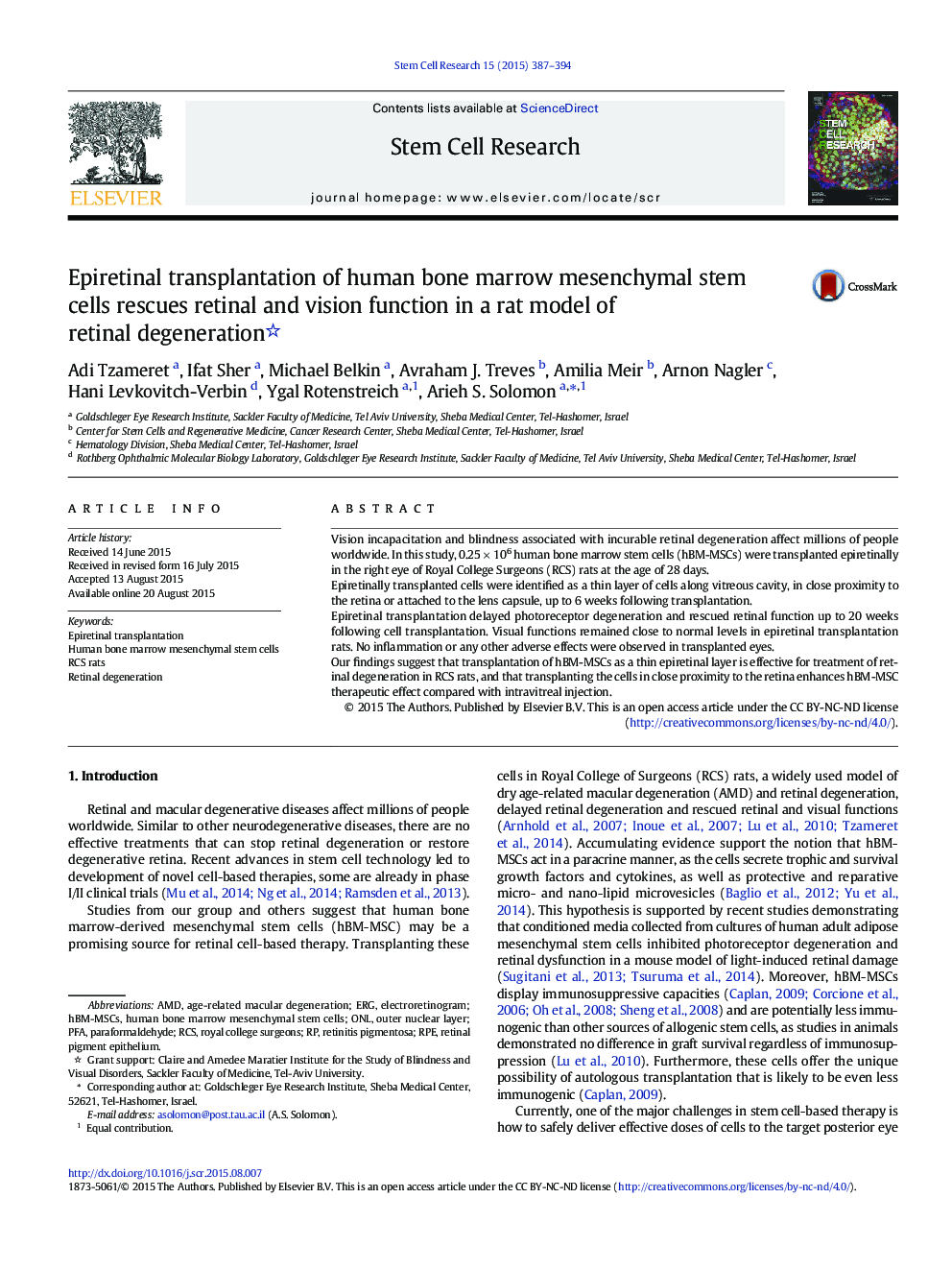| Article ID | Journal | Published Year | Pages | File Type |
|---|---|---|---|---|
| 2094146 | Stem Cell Research | 2015 | 8 Pages |
•Human bone marrow stem cells were epiretinally transplanted into RCS rats.•Cells were identified along the vitreous cavity 6 weeks following transplantation.•Retinal function was significantly higher in transplanted vs. control eyes (p < 0.05).•Beneficial effect on retinal function lasted 20 weeks following transplantation.•Treated animals maintained normal visual function 6 weeks following transplantation.
Vision incapacitation and blindness associated with incurable retinal degeneration affect millions of people worldwide. In this study, 0.25 × 106 human bone marrow stem cells (hBM-MSCs) were transplanted epiretinally in the right eye of Royal College Surgeons (RCS) rats at the age of 28 days.Epiretinally transplanted cells were identified as a thin layer of cells along vitreous cavity, in close proximity to the retina or attached to the lens capsule, up to 6 weeks following transplantation.Epiretinal transplantation delayed photoreceptor degeneration and rescued retinal function up to 20 weeks following cell transplantation. Visual functions remained close to normal levels in epiretinal transplantation rats. No inflammation or any other adverse effects were observed in transplanted eyes.Our findings suggest that transplantation of hBM-MSCs as a thin epiretinal layer is effective for treatment of retinal degeneration in RCS rats, and that transplanting the cells in close proximity to the retina enhances hBM-MSC therapeutic effect compared with intravitreal injection.
